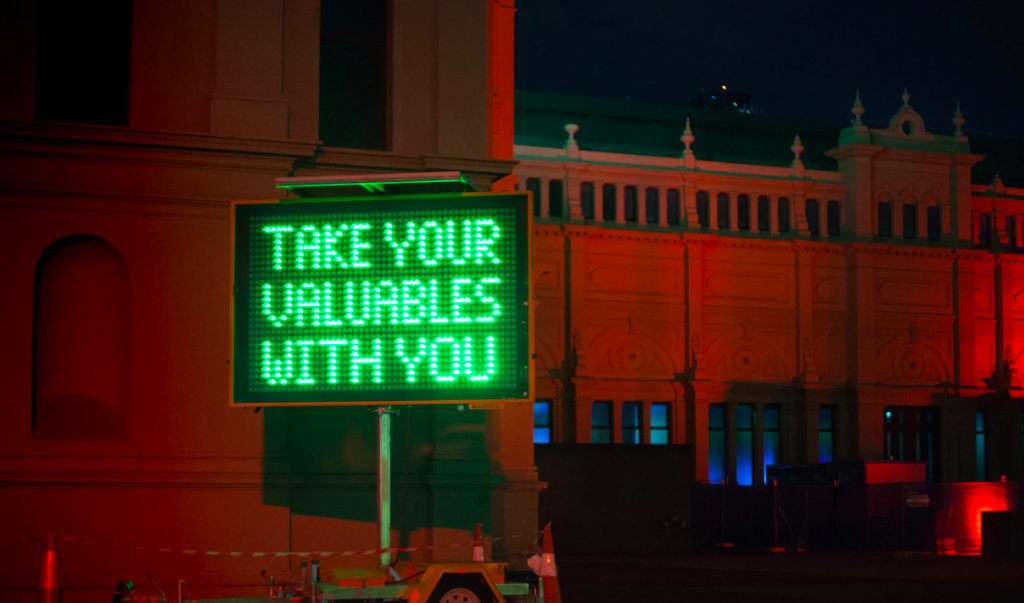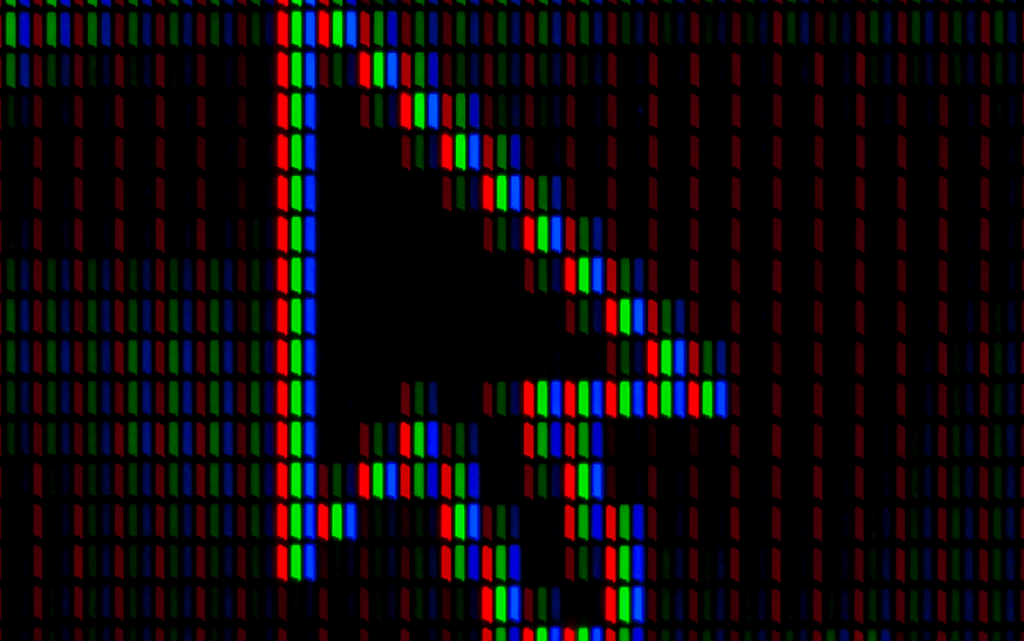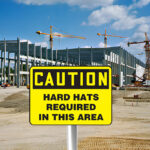Signs are all about communicating. Different kinds of signs are better geared toward conveying different types of messages. One of the best ways to communicate lots of information is through LED message centers.
Before you create any type of sign, you need to do some research on how to use it. To make it easier for you, here is our guide to helping you use LED message signs for your business.
All about LED message signs
Let’s start with the basics. LED message signs are also called message centers, digital displays, reader boards, or electronic signs. These are flat panels that use an array of light-emitting diodes as pixels for a video display.
A light-emitting diode (LED) is a semiconductor device that emits visible light when an electric current passes through it. It isn’t particularly bright, and it is usually monochromatic, so each little bulb will only project one color.
These are computerized signs. Therefore, they will need to be programmed, and you can change their content as much as you want.
Most businesses use these signs to display mainly text. This is a very efficient way to use them. However, you can include graphics too.
Benefits of electronic message centers
You always need to weigh the pros and cons of different types of signs. It will help you make the right decision every time. First, figure out what you are looking for, and then whether the specific sign will fit the bill.
So if you’re wondering, here are the key benefits of using LED message centers:
- You can set up a schedule for when you want specific messages to appear. For example, show specific content only on Fridays from 9:00-11:00 am.
- They are incredibly flexible, and you can change the content an endless number of times. Best of all, you can do this whenever you want to.
- LEDs are long-lasting and are an energy-efficient alternative to traditional lighting like neon.
- These signs are very cost-effective, mainly because you need to replace them less often. And you don’t have to pay each time you want to make any small change.
- Depending on the manufacturer and sign company, you will be able to choose between a range of shades of red and amber. Some specific products might be able to display other colors as well.
- More options for reuse
- Signs with illumination are far more likely to catch the eye of any passersby.
- The lighting improves visibility during the day and night. Therefore, you will have a 24-hour presence.
- You can usually control the brightness and dimming of the sign with software.
On the other hand, these signs might require a slightly larger initial investment than with other types of signage. However, it is all about long term planning and utility.
If we had to pick two words to describe LED message signs, they would be flexible and versatile. Who doesn’t need a bit more of those?
Uses of LED message signs

As we’ve said, all signs are meant to convey information. But some are just better at relaying certain types of info. This is typically based on the structure, appearance, size of the product. But also significantly on the amount and type of content that you can display on one board.
Based on all these features, here are some of the best uses for LED message signs:
- To make announcements about your business
- For advertising sales
- Promoting new products or services
- Displaying trading information like your opening hours
- Showing the time and date
- Notifying people about events
- Welcoming customers
- Giving directions or instructions inside your business
- For general advertisements
These are just a few examples. In most cases, if you think it, you can display it.
Where should you mount LED message signs?
The question plays a significant role in making sure that you get the most out of your display.
Once again, in this respect, these signs stand out for their versatility. These signs are pretty durable and can work well in a variety of settings. The primary limitation is that you will need to connect it to electricity. You will also need to link it to a computer of some kind with an ethernet cable.
Indoors vs. outdoors
Luckily, you can use these signs indoors or outdoors as long as you can still connect them. So ask yourself, where will it achieve its maximum effect?
Exterior signs are far better at reaching new potential customers. That’s why this is your best bet if advertising is your main goal. But it’s also an ideal way to communicate with existing clients to let them know that your store or office is open, for example.
Interior message centers are brilliant tools for communicating with your staff and customers in your building. For instance, you can notify employees about meetings and let clients know whether certain counters in your store are open or closed.
Plus, you can also advertise sales and promotions and direct people to the related products.
Mobile or fixed
Believe it or not, these signs don’t have to be permanently fixed in place.
Many businesses actually mount these boards on trucks or other vehicles. Generally, this allows you to reach a much wider audience as it moves around. You only need to figure a way to keep it connected.
Despite this, most people still prefer to mount these signs right outside or close to their place of business.
Combinations
Another factor to consider when creating your LED message sign is whether you want it to be freestanding or not. These signs work particularly well if you combine them with other types of products. For example, you can mount the panel on a monument sign.
Overall, this is a fantastic way to make sure that you connect the message with your brand.
Regulations for LED message signs
No matter what product you choose, you need to pay attention to local codes and regulations. Before you install a sign, you have to check zoning laws in your area. Plus, take a look at the conditions of your tenancy contract.
You might also need to check in with the International Dark-Sky Associations guidelines on light pollution and LED signage.
Creating content for LED message signs
Next up, let’s look at how to create content that will convey the right message.
As with any signage product, this means that you need to look at the content itself. However, that’s not all.
Among other things, you need to think of all of the following characteristics.
Clarity
A top priority for any sign is to check that the audience can understand the message. Clarity is king. There is little to no reason to create signage if people don’t get the point.
Here are our top tips for creating content for your LED message sign:
- Try to be unambiguous
- Use as few words as possible
- Don’t use long and complicated phrases
- Choose powerful and impactful words
- Decide what your primary message will be for the sign and focus on it. Make sure it appears more or less once per minute.
Keep in mind how much time people will have to read the sign.
The nature of the message needs to be adapted to the location of the sign. For example, people will have much more time to interpret an electronic display while they are waiting in line at a counter.
In contrast, they will need to be able to understand the message at a glance if they are going to read it while driving.
Ideally, you want to convey the entire message in 10 or so seconds. If you are using different slides, work out how much screen time you can give each to fit within this frame.
Text formatting
You can’t necessarily use the same font and font size as you would on your other signs. The results won’t always be the same.
Remember that the display quality of these signs won’t be the same as those of LCD screens like televisions. So 3D, ornamental, and embossed text will probably look pixelated on these message centers.
Instead, choose a two-dimensional font with little embellishment to get the most out of the sign.
Color
One of the first things you need to decide is whether you are going to get a monochrome sign or one with multiple colors.
This isn’t only an aesthetic consideration but a financial one too. LED message centers that can display multiple colors can cost you much more. Therefore, you want to think carefully about this decision.
Can you use pictures to sell your products or services?
If you can, and you have a substantial budget, then this could be a good option for you. Otherwise, monochrome signs will probably be the better option.
However, remember that if you really want graphics, but don’t necessarily want them to change, you could combine a simple, text-based LED display with another type of sign.
Brightness
Relying on lighting can make your sign more visible and help you convey your message. But only if you use it correctly.
Sunlight can make it much more difficult to make out the content. A solution to this is to use maximum brightness during the day.
Unfortunately, this can be a driving hazard at night but will also be less efficient and even unnecessary.
To make your life easier, we recommend that you install an ambient light sensor that you can use to control the brightness automatically.
Pixel pitch
Pixel pitch is an essential term when it comes to any digital sign. You can think of this as the resolution of the display.

The pitch is based on the distance between each pixel, which is made up of a few diodes. So the smaller this number is, the better the resolution of the sign will be. This will also correspond with the character size.
You should always try to strive to place signs at the optimal viewing distance for the audience. For LED message centers, this will be the point at which the different pixels blend to create a smooth image.
At this position, the image will be much more appealing to the viewer and will thus be much more impactful. To achieve this, you have to optimize the pitch for the sign.
The farther away the audience will be from the panel, the larger the pitch should be. On the other hand, the closer people will be, the smaller the resolution and the characters need to be to prevent pixelation.
Matrix
The pitch goes hand in hand with the matrix of LED signs. It is the number of pixels high by the number of pixels wide your board will be. Therefore, two panels with the same outside dimensions but not the same pitch will each have a different matrix.
In static signs, the matrix will determine how much total space you have to work with. And it will determine how many lines of text you can put on the sign and how many characters will fit on each.
As you can see, this can get pretty complicated. That’s why you must consult your sign company on the best matrix and pitch for your specific sign.
Motion
Movement can play an important part in the success or failure of your LED message sign.
Yes, it can be a great way to catch someone’s attention and to hold their interest. However, you need to be careful with how you use it.
Many people use scrolling texts on message centers. But this can actually make your sign less effective, not more so. Text that moves across the board can be more difficult and even impossible to read at a glance.
Instead, you can include motion with clips, animations, or transitions between slides. In sum, it works wonderfully as a way to capture attention before you display your primary message.
Keep it running smoothly
There are lots of things you can do on your end to make sure that your LED message sign conveys the right message. You can do this by tweaking the content, picking the right location, and choosing the best formatting, among other things.
But you will also need the help of a professional sign company. Not only can they help create the sign, they’ll be able to install and program the panel to run to the best of its capabilities.
Besides this, an expert company will be able to provide you with other necessary information – like how to combine the message center with other signs for optimal effect.




